|
Are you seeking an adventure that combines safety, beauty, and the thrill of exploration? Look no further than Portugal, a country recently rated as one of the safest destinations for female travelers. Renowned for its picturesque landscapes, rich culture, and warm hospitality, Portugal offers an unforgettable experience, especially when explored on two wheels. Join me on a journey through the enchanting regions of Northern, Central and Southern Iberia, revealing why I think Portugal is the ideal destination for female cyclists. Table of ContentsPortugal: A Safe Haven for Female TravelersPortugal consistently ranks high on safety indices, making it a top choice for women travelers. According to the Global Peace Index 2023, Portugal is the sixth safest country in the world. This accolade is complemented by the country's friendly locals, efficient public transport, and well-maintained infrastructure, ensuring that visitors feel secure and welcomed at all times.
As Condé Nast Traveler notes, "Portugal is the hidden gem of Europe, offering a perfect blend of stunning coastlines, rich history, and vibrant culture. Its safety and welcoming atmosphere make it an ideal destination for solo female travelers." Why Portugal Appeals to Female Travelers1. Welcoming Culture and Hospitality: Portuguese culture is deeply rooted in warmth and hospitality. Locals are known for their kindness and willingness to help, creating a welcoming atmosphere that makes female travelers feel at ease. To make things even more easy going - everyone speaks English! Please just don't make the mistake of trying to go native by speaking in Spanish... As National Geographic highlights, "Portugal is a tapestry of beautiful landscapes and historical treasures. Its reputation for safety and hospitality makes it a top choice for female adventurers looking to explore Europe's southwestern edge."
2. Diverse and Stunning Landscapes: From sun-kissed beaches to rolling vineyards and charming medieval towns, Portugal's diverse landscapes offer something for every traveler. Whether you're cycling along the dramatic cliffs of the Algarve or through the lush vineyards of the Minho, the scenery is bound to captivate your senses. Lonely Planet describes it perfectly: "Portugal's charm lies in its diversity. From the golden beaches of the Algarve to the verdant vineyards of the Douro Valley, every corner of the country offers something unique and enchanting." 3. Rich Cultural Experiences: Portugal boasts a rich cultural heritage, with historic sites, traditional festivals, and culinary delights at every turn, and even more so than in neighboring Spain, you can readily find gluten-free and vegan options from breakfast to dinner, in all but the smallest villages. Exploring by bike allows you to immerse yourself fully in this vibrant culture, discovering hidden gems that might be missed on a conventional tour. 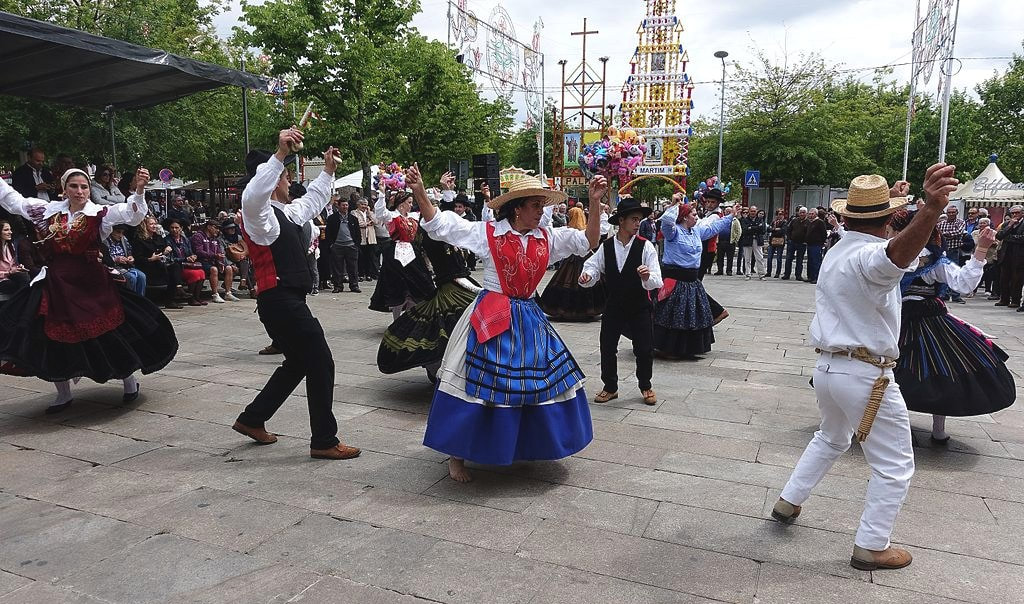
4. Excellent Infrastructure and Facilities: Portugal's infrastructure is highly developed, with excellent road conditions and clearly marked cycling routes. The availability of comfortable accommodations, from luxury hotels to charming guesthouses, ensures that female travelers have plenty of safe and pleasant options for rest and relaxation. Travel + Leisure emphasizes, "One of the safest countries in Europe, Portugal provides a stress-free travel experience with its friendly locals, efficient public transportation, and well-developed tourism infrastructure."
Safety in Portugal: What Female Travelers Need to KnowPortugal is broadly regarded as an exceptionally safe destination for female travelers, with low rates of violent crime and petty theft. Major cities like Lisbon and Porto are secure at night, especially in well-lit, populated areas. Public transportation is reliable and well-maintained, though it's wise to stay alert. Street harassment is rare, and locals are typically respectful and helpful. Additionally, tap water is safe to drink throughout the country. These factors contribute to Portugal's reputation as a welcoming and secure haven for women exploring solo or in groups. Safety at Night: However, it's advisable to remain cautious in some areas, especially on the outskirts or in quiet alleys. Stick to well-lit, populated places, and stay alert to your surroundings. As with any major city, be mindful of pickpockets in tourist areas and on public transportation. Public Transportation: Nevertheless, always stay vigilant and keep an eye on your belongings, particularly in crowded areas and major tourist spots, to avoid petty theft. Street Harassment: It's still wise to take general safety precautions, especially after dark in less populated areas or when using public transportation. Petty Crimes: Outside main cities, petty crime incidence is very low. By staying vigilant and securing your personal belongings, you can significantly reduce the risk of such incidents. Tap Water & Food: However, note that the taste may vary between regions due to different water sources and treatment processes. Similarly, food standards are generally very high, thanks to stringent goverment enforced health and safety measures that only got more stringent after the covid pandemic. These safety features make Portugal not only a beautiful and culturally rich destination but also a reassuringly safe one for female travelers. Recommended Bike Touring Routes for Female TravelersPortugal's diverse landscapes and well-maintained roads make it a cyclist's dream. Whether you're seeking coastal views, lush vineyards, or serene countryside, Portugal offers a variety of stunning routes to explore. My top recommendations for bike touring in Portugal are the Camino de Santiago (in Northern Portugal and Spain), Algarve, Minho, and Alentejo regions, each offering a unique blend of natural beauty and cultural richness.
Camino Português: This popular route of the Camino de Santiago, is ideal for female travelers. Its well-marked paths, friendly pilgrim community, and numerous safe accommodations ensure a secure journey. Passing through charming towns and scenic countryside, it offers cultural immersion and stunning views, all within a low-crime environment with welcoming locals. Algarve: Known for its stunning coastline, the Algarve is a cyclist's paradise. The region offers a mix of flat, scenic routes and challenging hills, perfect for riders of all levels. Highlights include the Ria Formosa Natural Park, the historic town of Lagos, and the vibrant city of Faro. The Algarve's mild climate makes it an ideal year-round destination for cycling enthusiasts.
Minho: Situated in the north, Minho is renowned for its lush landscapes, flowing rivers, dedicated bike paths and historical charm. Cycle through the verdant vineyards of the Vinho Verde wine region, explore the medieval streets of Guimarães, and enjoy the tranquil beauty of the Peneda-Gerês National Park. Minho offers a unique blend of natural beauty and cultural richness.
Alentejo: The Alentejo region, with its rolling plains and cork forests, offers a serene escape from the hustle and bustle of urban life. Cycle through picturesque villages, visit the UNESCO World Heritage city of Évora, and savor the region's renowned cuisine and wines. Alentejo's quiet roads and gentle terrain make it perfect for leisurely bike tours.
Plan Your Next Adventure in PortugalAt Cycling Rentals, we specialize in creating independent cycling experiences on meticulously planned routes ensure that you can explore Portugal safely and comfortably, with all the support you need, just a phone call away. Whether you're embarking on a solo journey or traveling with friends, we are committed to providing a memorable and enjoyable adventure.
Discover the beauty and charm of Portugal on a bike tour, and embrace the freedom of the open road, the allure of breathtaking landscapes, and the joy of new experiences. Portugal awaits, and with Cycling Rentals, your cycling adventure promises to be extraordinary. Embark on your cycling adventure with confidence, knowing that Portugal is one of the safest and most welcoming destinations for female travelers. As Forbes notes, "Portugal is a haven for female travelers, offering not only safety and comfort but also a wealth of experiences from its bustling cities to its tranquil countryside." Inquire about a tour with Cycling Rentals today and experience the magic of Portugal like never before!
0 Comments
We've had so many requests relating to cycling the N2 road in Portugal that I'm here to guide you through what's being called the Portuguese Route 66. This isn't just another epic road cycling route; it's a journey of discovery, culture, and breathtaking landscapes. From the historical town of Chaves in the North to the sunny shores of Faro in the South, the N2 is a treasure trove for anyone who loves to explore on two wheels. So, grab your gear, and join me on an unforgettable ride! Table of ContentsHistory and BackgroundThe N2, Portugal's Route 66, is steeped in history. Constructed in the 1940s, this iconic road stretches over 739 km, making it the longest continuous road in Portugal, that runs through an entire country. As you pedal along, you'll be tracing the paths of ancient traders, warriors, and explorers who shaped Portugal's rich and varied history. Today, the N2 offers a unique oportunity to explore Portugal from north to south, and experience the diferent scenery, gastronomy and tradtions along the way. What to Expect on the N2Imagine a route that takes you through a tapestry of landscapes – verdant valleys, serene rivers, rugged mountains, and charming villages. The N2 is all this and more. You'll encounter not just physical diversity, but also cultural richness. Each region has its own unique traditions, cuisine, and dialects, offering a true taste of Portugal's multifaceted character. When it was the backbone of road transport from north to south, many hundreds of excellent resturants and cafes were built along the way, and many of these rose to national fame. These days, only the best remain, and while you shouldn't have trouble find good places to eat along the N2, it's wise to plan your route with food in mind! Since the road goes right through the geographic middle of Portugal, you'll get to cycle past some pretty forgotten old towns and villages that seem to have stopped in time, as so often happens away from the major cities and coastline. Expect to see the odd horse drawn cart and plenty of vintage cycles along the way! Principal Towns Along the N2 RouteChaves: This historical town, known for its Roman thermal springs, is your northern gateway. Its ancient streets and tranquil environment set the perfect stage for the start of your journey. Vila Real: Nestled amidst the mountains, this town offers stunning views of the Douro Valley and its terraced vineyards. Lamego: Famed for its baroque Sanctuary of Our Lady of Remedies, Lamego is a blend of history and natural beauty. Viseu: Rich in art and history, Viseu is a treasure trove with its museums and historic buildings. Coimbra: The university city, renowned for its historic university, one of the oldest in Europe, buzzing with youthful energy and culture. Sertã: A hidden gem in the heart of Portugal, it's a glimpse into the country's rural traditions. Castelo Branco: Known for its unique crafts and delicious cheese, this town is a delightful stopover. Évora: (You'll have to detour some kilomteres off the N2) A UNESCO World Heritage Site, it's a historical masterpiece with its well-preserved old town and Roman Temple. Beja: In the serene Alentejo region, Beja stands as a beacon of Portugal's medieval past. Faro: Your final stop, where the aroma of the sea welcomes you. This coastal city is the perfect place to relax after your long journey. What Not to MissWine Tasting in the Douro Valley: This region is world-famous for its wine, particularly Port. Visit the vineyards and indulge in some wine tasting. Historic Landmarks in Viseu and Évora: From cathedrals to ancient Roman ruins, these cities are a historian's delight. The Schist Villages: Discover these traditional villages made of schist stone, offering a genuine glimpse into a bygone era. The Breathtaking Alentejo Landscapes: Renowned for its rolling plains, ancient castles, whitewashed villages and wine & olive groves, Alentejo offers a peaceful escape. Algarve's Beaches: After your long ride, unwind on the beautiful beaches of the Algarve. What is the Scenery Like?Embarking on a journey along the N2 from Chaves to Faro is like flipping through the pages of a book of landscapes. But your going to have to work for it! The scenery you'll encounter is as diverse as the terrain in Portugal itself, changing dramatically as you pedal from north to south. In the North: Green and MountainousYour journey begins in Chaves, a region characterized by its lush greenery and rolling hills. The northern part of Portugal is known for its dense vegetation and cooler, wetter climate, which contributes to its vibrant, emerald landscapes. As you cycle through this region, you'll be treated to views of terraced vineyards, especially as you approach the Douro Valley, a UNESCO World Heritage site renowned for its stunning beauty and wine production. The northern mountains, though challenging, offer breathtaking panoramas that are a feast for the eyes. Transitioning Through Central Portugal: Diverse and HistoricAs you move southward into central Portugal, the landscape begins to shift. Here, you'll find a blend of lush river valleys and more arid, rugged terrain. The topography is a mix of gentle hills and steeper mountain ranges, with the occasional plateau offering a respite from the climbs. This region is dotted with historic towns and villages, each adding to the scenic charm. The forests here are mixed, with pine and eucalyptus trees becoming more common, creating a fragrant, refreshing backdrop for your ride. The Schist VillagesThe Schist Villages, or "Aldeias do Xisto," are a collection of charming, traditional villages in central Portugal, known for their unique schist stone architecture. Nestled in the Lousã and Açor mountain ranges, these villages blend seamlessly into the natural landscape with their stone houses and slate roofs. They offer a glimpse into a timeless, rural way of life, rich in history and tradition. Recently revitalized, these villages now attract visitors for their picturesque beauty, outdoor activities, and a serene escape into the heart of Portugal's countryside. Visiting these villages (by bike or othewise!) is an authentic experience, showcasing Portugal's beautiful architectural heritage and the warm hospitality of its people. Into the Plains of Alentejo: Golden and SereneAs you approach Alentejo, the scenery undergoes another transformation. The lush greenery gives way to the golden tones of vast plains and gently rolling hills. This region is characterized by its open landscapes, cork oak trees, olive groves, and vineyards. The Alentejo is less forested and more agricultural, offering a sense of openness and tranquility. The rhythm of life here is slower, and the scenery reflects this peacefulness. Ending in Algarve: Coastal and PicturesqueFinally, as you reach the southernmost region of Portugal, the Algarve welcomes you with a different kind of beauty. The rugged inland mountains gradually descend into a stunning coastline, marked by dramatic cliffs, sandy beaches, and the sparkling Atlantic Ocean. The vegetation here is adapted to the Mediterranean climate, with more shrubs and coastal flora. Cycling into Faro, you'll be greeted by the sight of palm trees, a symbol that you've reached the sunny, relaxed vibes of Portugal's famous southern coast. While the new town is built up, the old town retains all its ancient moorish inspired charm. The N2 road offers an ever-changing tapestry of landscapes. From the verdant hills of the north to the serene plains of Alentejo and the coastal allure of Algarve, this route is a celebration of Portugal's natural diversity. Each pedal stroke brings a new view, a different slice of scenery, making the N2 a visually stunning and unforgettable cycling experience. The N2 Passport: A Unique Souvenir of Your JourneyAs you embark on your cycling adventure along the N2 from Chaves to Faro, don't miss the opportunity to collect a unique memento of your journey - the N2 Passport. This special passport serves as both a guide and a delightful keepsake, allowing you to collect stamps from various towns and landmarks along the route. How it Works: The N2 Passport can be obtained at tourist information centers in many of the towns along the route, including the starting point in Chaves. As you pass through each town or notable point along the N2, look for designated spots (like tourist offices, town halls, or specific landmarks) where you can get your passport stamped. Each stamp is unique, representing the town or landmark, making your passport a personalized record of your journey. Why Get an N2 Passport? It's a fun way to keep track of your progress along the N2, and collecting stamps provides an added incentive to explore the towns and their highlights. At the end of your journey, the passport becomes a treasured souvenir, a tangible reminder of your adventures and the places you've visited. Completing Your Journey: Upon reaching Faro, the final stamp in your passport symbolizes the completion of your epic journey. Some cyclists celebrate this achievement by sharing their filled passports on social media or framing it as a memento, or putting it on your trophy case! The N2 Passport can be more than just a piece of paper; just like the Camino Credential - or pilgrim's passport - it's a narrative of your travels, a collection of memories, and a testament to the incredible journey you've undertaken along Portugal's most famous road. What to PackAs part of your preparation for an independent bicycle tour, packing smart is key. Along with cycling essentials like a repair kit, helmet, and appropriate clothing, I do recomend as always trying to pack light. Essentials include a first aid kit, gloves and glasses, sun protection, energy snacks, and a camera or smartphone for capturing the moments. Also, consider the season – layers for colder months and breathable fabrics for the summer. i know it's common snese, but I prefer to use a checklist every time I pack before a bike tour. Where to StayAccommodation along the N2 route in Portugal varies widely, catering to different preferences and budgets. Here's my broad overview of the types of accommodations you can expect: Hotels and Resorts: In larger towns and cities like Vila Real, Viseu, and Faro, there are a variety of hotels ranging from budget-friendly options to luxury resorts. Many offer secure bike storage, making them very convenient for cyclists. Rural Tourism and Country Houses (B&B): Particularly in areas like the Douro Valley and Alentejo, you can find accommodations in rural settings, such as converted farmhouses or country estates. These often offer a rustic and authentic experience, with opportunities to enjoy local cuisine and wine and are my recommended type of accomodation on this route, (and our prefered type of accomodation on our self guided bike tours in Portugal). Hostels: In the bigger towns and cities, hostels are a budget-friendly option. They provide basic accommodations, often with shared rooms and facilities, and are a good way to meet fellow travelers. Camping and Glamping: For those who prefer to be closer to nature, there are a few campsites along the N2. Some areas also offer glamping with facilities like comfortable beds and private bathrooms in a natural setting. BUT - this is my least recommended option as there is a real scarcity and you will need to plan your logitics very carefully to ensure you can ride from campsite to campsite in a feasible or at least enjoyable days ride. Agrotourism and Ecotourism Accommodations: These are becoming increasingly popular, focusing on sustainable and eco-friendly practices. They often offer unique experiences like farm activities or nature walks, but oftne have very basic rooming facilities only. Local Rentals and Airbnb: In most towns, you can find private rooms, apartments, or houses for rent. This option gives you more flexibility and the chance to stay in residential neighborhoods. Historic Pousadas: Portugal is known for its "Pousadas", which are historic buildings like castles, monasteries, or palaces that have been converted into accommodations. They are typically found in historic towns and offer a unique, luxurious experience. Fortunatley, you budget will go a long way as there are only Pousadas in Vila Real, Evora, Beja and Faro! Each type of accommodation offers a different experience, and availability may vary depending on the season and location. It's advisable to book in advance, especially during peak tourist seasons, and to inquire about bike storage options if you're traveling with a bicycle. Where to EatCycling the N2 is going to work up your appetite. As I mentioned previously, and as a voracious eater, I find it wise to plan your meal stops if you fancy a decent sit down meal, and be sure to have some back up snacks for longer sections. As anywhere else in Portugal, you'll find plenty of inexpensive groceries at large and small supermarkets, and wonderful bread at local bakeries! Cafés and small, family run restaurants are also still plentiful, even in the interior. National staples you will find in most places include: excellent soup of the day, grilled chicken, fresh salads and cod - every which way! You will also have plenty of options to choose from, and I can safely say that Portugal is a foodie's paradise, with simple, delicious and afforable food for all tastes. And if you like wine, then you simply can't go wrong! Depending on how adventurous you are, here are some traditional regional dishes you could try along the way, as well as a selection of highly-rated restaurants known for serving these local specialties: Northern Portugal (Chaves to Vila Real) Dish: Pastéis de Chaves (a type of flaky pastry filled with meat) - Restaurant: Restaurante Carvalho in Chaves is known for its authentic local cuisine. Douro Valley (Peso da Régua, Lamego) Dish: Bacalhau à Douro (a codfish dish) - Restaurant: Castas e Pratos in Peso da Régua offers a modern twist on traditional Portuguese dishes. Central Portugal (Viseu, Tondela) Dish: Vitela Assada (roast veal) and Serra da Estrela Cheese - Restaurant: Mesa de Lemos in Viseu is a highly acclaimed spot for its exceptional local cuisine. Beira Region (Sertã, Pedrógão Grande) Dish: Maranho (a traditional sausage-like dish made with goat meat) - Restaurant: Ponte Velha in Sertã, offering a range of local dishes with beautiful river views. Alentejo (Montargil, Ponte de Sor, Avis) Dish: Porco Preto (traditional Iberian black pig), Migas (bread-based dish with herbs) - Restaurant: A Maria in Montargil is celebrated for its traditional Alentejo dishes. Algarve (Faro) Dish: Cataplana de Mariscos (seafood stew) - Restaurant: Faz Gostos in Faro, known for its fresh seafood and local flavors. These dishes reflect the rich culinary diversity of Portugal and are deeply rooted in each region's history and local produce. The restaurants suggested are highly rated and popular among locals and visitors alike. They offer an authentic taste of the region’s culinary traditions, making them perfect stops for refueling and experiencing local culture during your cycling journey. When to GoThe best times to embark on this journey are spring (April to June) and early autumn (September to October). These months offer the most pleasant weather, avoiding the intense heat and often more intense traffic of summer and the unpredictable winters. Often early spring can be quite cool, especially in the north, so pack layers for all conditions! Late spring and late summer are usually the best times to ride, and a light rain or wind breaker should usually suffice for early mornings and evenings. Who is the N2 Route Suitable For?Let's set the record straight: the N2 in Portugal is a route for seasoned, experienced cyclists. This journey is not just a scenic ride through picturesque landscapes; it's a challenging adventure that requires a reliable bicycle, skill, endurance, and a good dose of courage. The N2, for much of its length, shares the road with motorized traffic. From the moment you pedal out of Chaves, you'll be sharing the asphalt with cars, trucks, and buses. While some stretches, especially outside the town centers, are blessed with low traffic, don't let this lull you into complacency. There will be sections where the traffic is not only fast-moving but also heavy. As a seasoned cyclist, you're probably well-versed in the art of road cycling. You understand the importance of being visible, predictable, and aware at all times. On the N2, these skills aren't just useful; they're essential. The road demands your full attention, especially on stretches where the shoulder is narrow or non-existent. Moreover, the route's varying terrain adds another layer of complexity. You'll encounter steep climbs, sharp turns, and at times, challenging road conditions. This is not a route for the faint-hearted or the inexperienced. Due to the scenic and cultural significance of the N2, it is also a popular route for motorcycle touring. The physical demand of cycling long distances day after day, combined with the mental focus required for safe road cycling, makes the N2 suitable only for those who have a substantial amount of cycling experience under their belt. Suggested N2 cycling route from Chaves to FaroThe offical route simply follows the N2 road, but it's useful to break the 740 km ride into manageble and enjoyable rides and overnight stays. Below is my suggested itinerary that spans eight days, and stops at towns were you can find plenty of places to sleep and eat well: Day 1 (Chaves to Peso da Régua): Begin with a scenic yet challenging ride through the Douro Valley, famous for its vineyards. Overnight in Peso da Régua, at the heart of the Douro valley. Day 2 (Peso da Régua to Viseu): Ascend through terraced vineyards, enjoying breathtaking views en route to Viseu, a city steeped in history. Day 3 (Viseu to Góis): Traverse diverse terrains to the picturesque old town of Góis, a perfect retreat by the riverside. Day 4 (Góis to Sertã): Journey through scenic central Portugal to Sertã, renowned for its natural beauty. Day 5 (Sertã to Montargil): Tackle one of the longest stretches, experiencing the heart of Portugal's rural landscape, before relaxing by the serene lakeside of Montargil. Day 6 (Montargil to Alcáçovas): Enjoy a smoother ride through Alentejo, with its iconic cork oak forests, and stay in the historically rich town of Alcáçovas. Day 7 (Alcáçovas to Castro Verde): Continue through the unique landscapes of Alentejo to Castro Verde, a town amidst the captivating 'campo branco'. Day 8 (Castro Verde to Faro): Conclude your journey with a ride to Faro, blending inland beauty with coastal allure, and celebrate in a city known for its vibrant culture and picturesque beaches. For a more in-depth exploration and to embark on this unforgettable journey, dive into my full article detailing the day-by-day N2 cycling itinerary from Chaves to Faro. I have listed milage, gain and other in-depth details of this epic bike journey! Your Next AdventureIf you're an experienced cyclist looking for your next big challenge, the N2 in Portugal could be the perfect fit. It's a route that rewards your hard work and experience with unparalleled views, rich culture, and an undeniable sense of achievement. However, if you're new to cycling or have limited experience in long-distance road cycling, especially in mixed traffic conditions, you might want to try another bike touring route in Portugal, to gain more experience before tackling this epic road route. The N2 is an incredible journey, but it's one that demands respect and preparation. If you need a bicycle to cycle the N2 route, check our our rental bike fleet or bike rental packs, which include eveything you need for an indepent bike tour in Portugal. Happy cycling! Looking for the perfect cycling route along Portugal's storied N2 route? Our itinerary breaks the 740 kms into managable daily bike rides from the historic town of Chaves in the north all the way to the sunny shores of Faro in the south. This cycling itinerary spans 8 days of diverse landscapes, cultural explorations, and personal triumphs. Each day offers a unique glimpse into the heart of Portugal, with its picturesque valleys, traditional villages, and the alluring tranquility of the countryside. Table of ContentsDay-by-day cycling itinerary from Chaves to FaroDay 1: Chaves to Peso da RéguaDistance: 88 km (54.7 miles) Elevation Gain: 1230 m Start your journey in the historical town of Chaves. The ride to Peso da Régua takes you through the picturesque landscapes of northern Portugal, with a significant elevation gain. This route traverses through the beautiful Douro Valley, famous for its vineyards. Overnight in Peso da Régua, a charming town nestled along the Douro River. Day 2: Peso da Régua to ViseuDistance: 82 km (51.0 miles) Elevation Gain: 1630 m Depart Peso da Régua, heading towards Viseu. This stretch, with its high elevation gain, offers stunning views of the Douro Valley and its terraced vineyards. Explore Viseu's rich history and cultural heritage upon arrival. Day 3: Viseu to GóisDistance: 98 km (60.9 miles) Elevation Gain: 1370 m The ride from Viseu to Góis is through diverse landscapes, including forested areas and river valleys. Overnight in Góis, a small riverside town, provides a tranquil setting for rest and relaxation. Day 4: Góis to SertãDistance: 66 km (41.0 miles) Elevation Gain: 1285 m Cycle through central Portugal’s scenic terrain to reach Sertã. Despite being a shorter ride, the route includes a considerable elevation, making it both challenging and rewarding. Overnight in Sertã, known for its natural beauty, is perfect for an overnight stay. Day 5: Sertã to MontargilDistance: 109 km (67.7 miles) Elevation Gain: 1220 m Embark on one of the longest stretches of your journey to Montargil. This ride takes you through the heart of Portugal with its rolling hills and traditional villages. Overnight in Montargil offers a serene lakeside environment for relaxation. Day 6: Montargil to AlcáçovasDistance: 90 km (55.9 miles) Elevation Gain: 1020 m The journey to Alcáçovas is relatively smoother, traversing through the plains of Alentejo. The region is known for its cork oak forests and olive groves. Overnight in Alcáçovas, a town rich in traditional crafts and history. Day 7: Alcáçovas to Castro VerdeDistance: 90 km (55.9 miles) Elevation Gain: 804 m Continue through Alentejo’s unique landscapes to Castro Verde. This day has a lower elevation gain, offering a chance to enjoy the expansive views. Overnight in Castro Verde, in the midst of the 'campo branco' (white fields), provides a unique cultural experience. Day 8: Castro Verde to FaroDistance: 96 km (59.7 miles) Elevation Gain: 1170 m Your final day takes you to Faro, the capital of Algarve. This leg of the journey combines inland scenery with the coastal allure as you approach the south of Portugal. Celebrate your arrival in Faro, a city known for its historic old town, lively marina, and proximity to beautiful beaches. Ready to Cycle the N2?This eight-day cycling odyssey along the N2 is more than a mere journey; it's an exploration of Portugal’s soul. From the rolling hills of the north to the serene plains of Alentejo and the lively streets of Faro, each pedal stroke brings a new discovery. This route is not just a test of endurance but a passage through a land of timeless beauty, rich history, and enduring traditions. For a more in-depth look at the N2 route, with What to Pack, Where to Stay, Where to Eat and When to Go on this epic bike journey, dive into my full article detailing all you need to know about cycling N2 cycling itinerary from Chaves to Faro. I'm so stoked to reflect on the incredible year we've had, especially with the introduction and updates to some of our most beloved self guided bike tours. Table of Contents
Our commitment to providing unique and memorable experiences for cycling enthusiasts has been wonderfully realized in 2023, here are some of the highlights for me: Eurovelo 1: From Porto to LisbonOur newly updated Eurovelo 1 self-guided bike tour has been a standout experience. Starting in the vibrant city of Porto, riders embarked on a journey south along the stunning Atlantic coast, exploring charming towns and witnessing the raw beauty of Portugal's western shores. The route's varied landscapes, combined with Portugal's rich culture and cuisine, made every pedal worth the effort. The final descent into Lisbon, with its historic charm and lively streets, was a fitting finale to this unforgettable tour. Algarve Self-Guided Bike TourThe Algarve region, known for its breathtaking cliffs, golden beaches, and sunny skies, was once again a favorite among our cyclists. This year, we updated the tour to include more hidden gems and less-traveled paths, allowing riders to fully immerse themselves in the Algarve's natural beauty and tranquil seaside towns. The blend of challenging rides and relaxing coastal stops was a perfect balance that left our guests longing to return. Azores Self-Guided Tour: The Island of São MiguelThis year, we were excited to launch the newly updated Azores self-guided bike tour on the enchanting island of São Miguel. Known for its lush landscapes, volcanic lakes, and thermal springs, São Miguel offered an entirely unique biking experience. Our cyclists were captivated by the island's dramatic scenery, from the emerald green and blue hues of the Sete Cidades crater lakes to the steaming geothermal pools of Furnas. The tour's routes were carefully designed to showcase the island's diverse natural beauty, with opportunities to stop at charming coastal villages and taste the local Azorean cuisine. This tour has quickly became a favorite for its blend of natural wonders, cultural richness, and serene cycling paths, making it a must-do adventure for any cycling enthusiast! Picos de Europa Self-Guided Bike TourExploring the majestic Picos de Europa was a dream come true for many. This tour, weaving through dramatic mountain landscapes, offered an exhilarating challenge for our more adventurous riders. The panoramic views, the sense of achievement in conquering steep ascents, and the tranquil ambiance of the Picos' valleys provided a deeply rewarding experience. The local cuisine and warm hospitality were the cherries on top of this high-altitude adventure. Camino de Santiago Self-Guided Bike TourLastly, our Camino de Santiago bike tour continued to inspire and uplift. This spiritual journey, traversing through the serene countryside of northern Spain, has been a source of reflection and personal growth for many. The blend of historical sites, rural landscapes, and the camaraderie among fellow pilgrims made this more than just a bike tour – it was a journey of the soul. Ride OnAs we move into the next year, we're excited to keep improving and expanding our tours, always with the aim of creating life-enriching cycling adventures. We're deeply grateful to our community of riders who have joined us this year and look forward to welcoming new and returning faces in the future. The train transport system in Portugal is great. Here's what you need to know how to make it work for your bicycle journey by following our guide to fuss-free bike travel on trains when you visit Portugal. If you are going to start or finish a route in Lisbon, Faro or Porto in Portugal you will most likely use the national train operator, CP (Comboios de Portugal) Intercidades trains. The CP train routes go to the following destinations in Portugal: Lisbon – Oporto / Guimarães / Braga / Viana do Castelo, Beira Alta, Beira Baixa, Alentejo (Lisbon Oriente / Évora) and Algarve. Below is the CP list of conditions for taking your bicycle on a train in Portugal: The 2nd class carriages on Intercidades trains have dedicated supports for traditional bikes, allowing 2 bikes to be taken in each carriage. The supports in the carriages do not have padlocks.
More information can be found in English here: https://www.cp.pt/passageiros/en/passenger-information/Useful-information/bike-transport Confirm space on the train at the ticket office well before you want to board the train!The Regional, InterRegional and Coimbra urban trains allow you to take your bike. These trains are used more for shorter distances, to cross the Algarve or the Douro, for example. On the platform before boarding, go to the ticket inspector, who must issue the ticket (the passenger's) and say whether the bike can go on board as the space is limited depending on the type of train. There are a few temporary restrictions on bikes on the Regional and InterRegional trains. It is advisable to use the carriages and spaces indicated by a bike symbol on outside of the regional trains. More information about traveling by public transport in Portugal can be found here: https://euroveloportugal.com/en/public-transport-connections By Vanya Maplestone & Enrique Díaz We are both cycling tour guides and travel all year round in Portugal, sometimes by train or motorhome but mostly on two wheels. After 5 years traveling in this amazing country together we have many useful things to share with you! |
Cycling In Portugal |
Cycling In Spain |
Bikes & Equipment |
Follow UsFollow us on social media where we share all our special offers, news, events & more.
|
CONTACT Us |
Terms & Conditions | Privacy Policy | Travel Agents | Press Kit | Travel Insurance © Cycling Rentals 2022
Cycling-Rentals is a division of Cycling through the Centuries. Registered Tour Operator RNAAT nº58/2006. Registered Travel Agent RNAVT nº 5035
Cycling-Rentals is a division of Cycling through the Centuries. Registered Tour Operator RNAAT nº58/2006. Registered Travel Agent RNAVT nº 5035

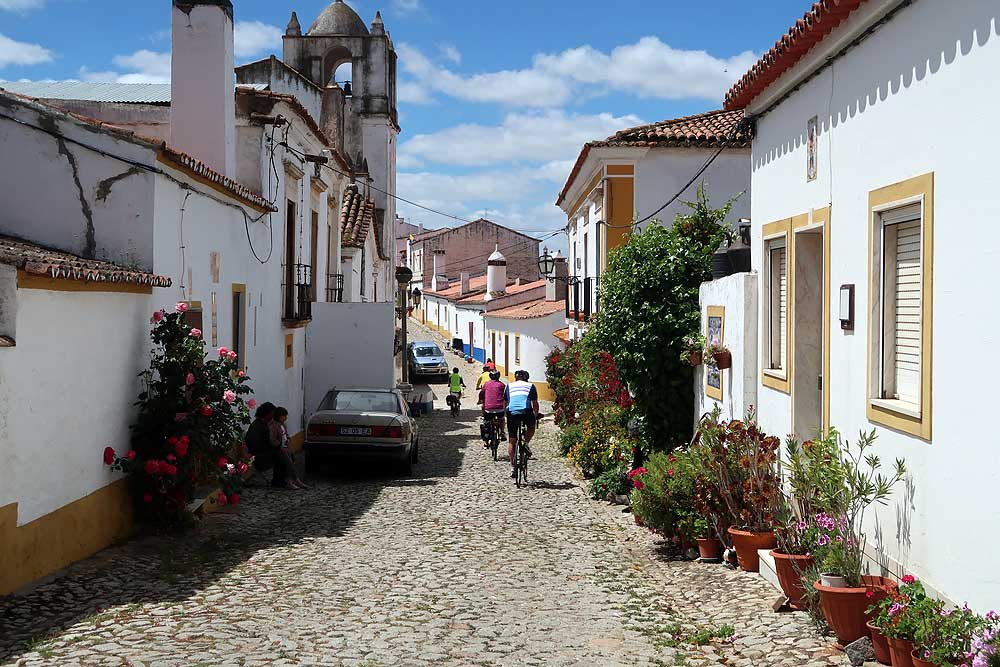

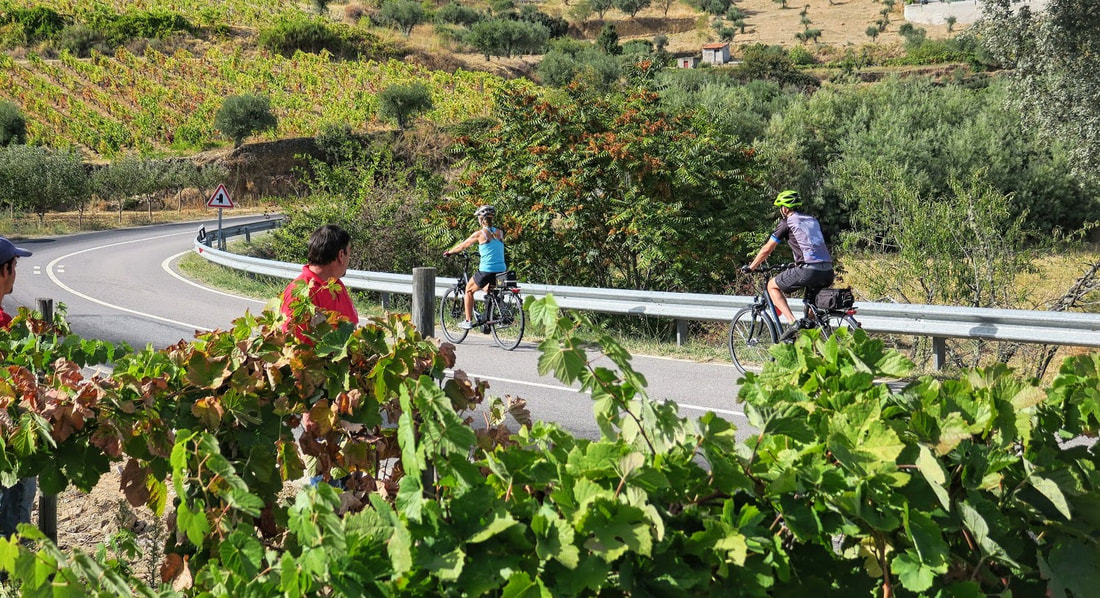



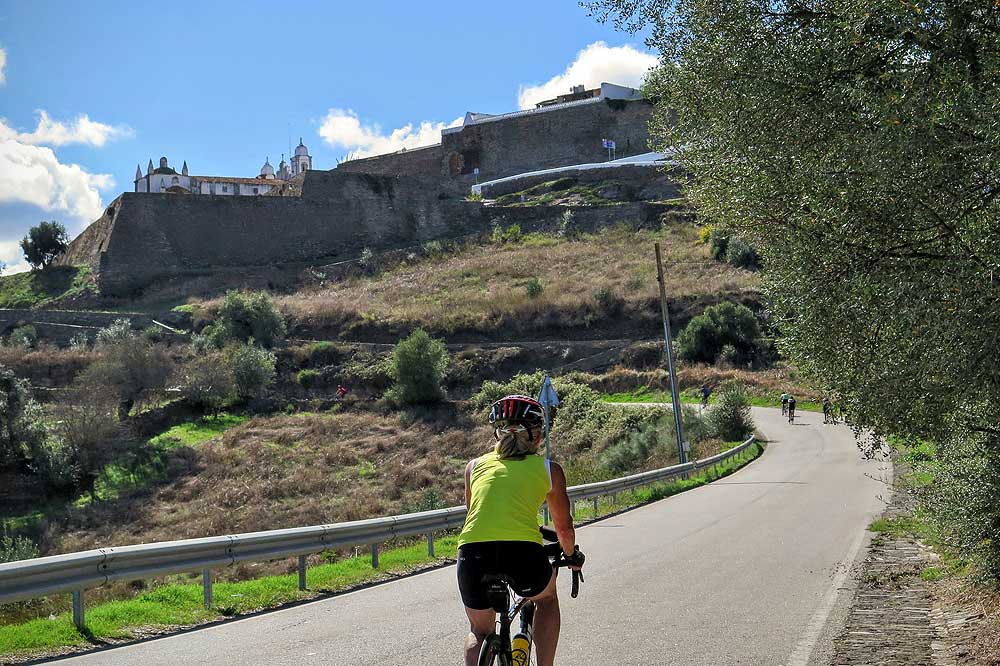
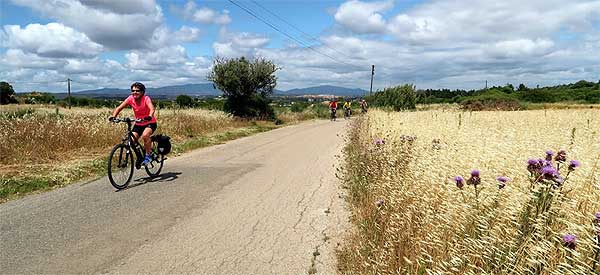
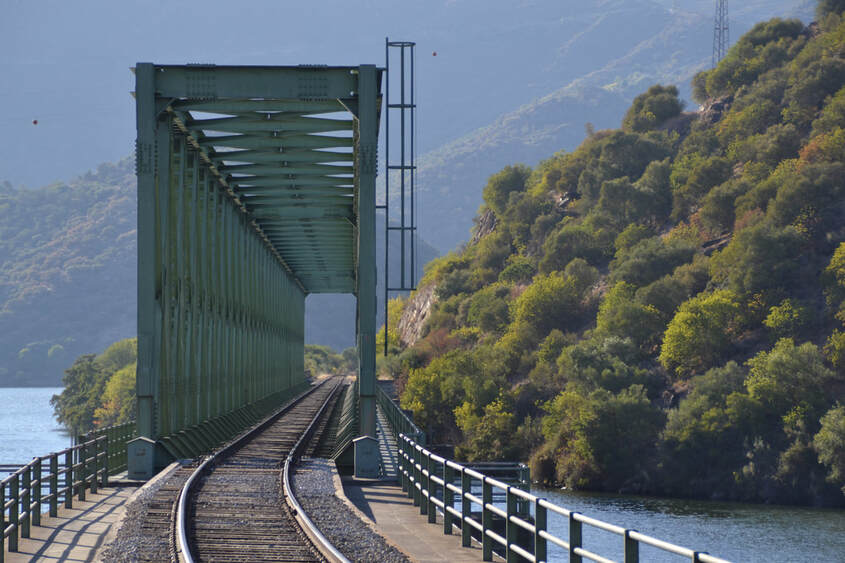

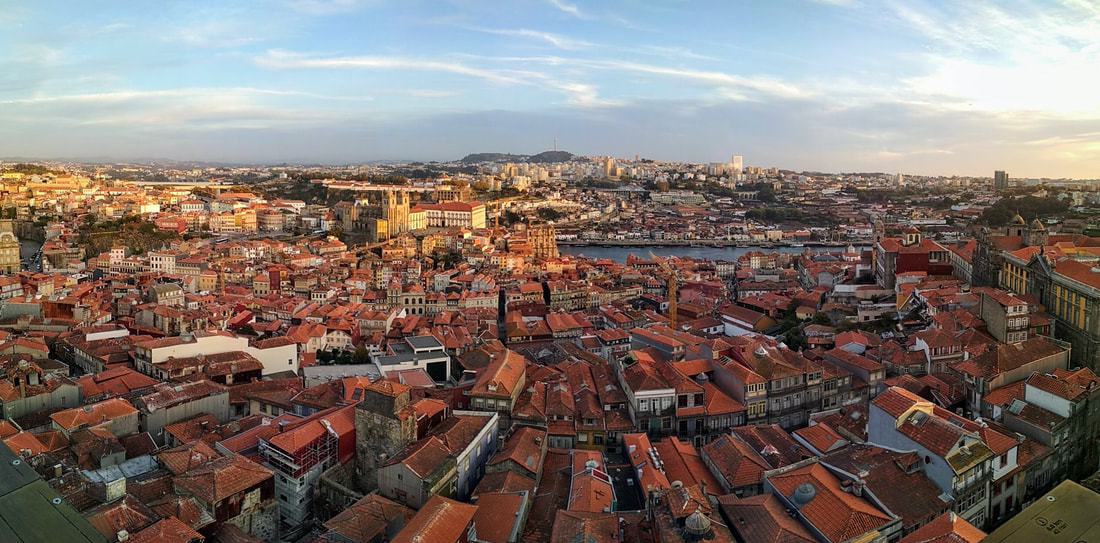
 RSS Feed
RSS Feed





